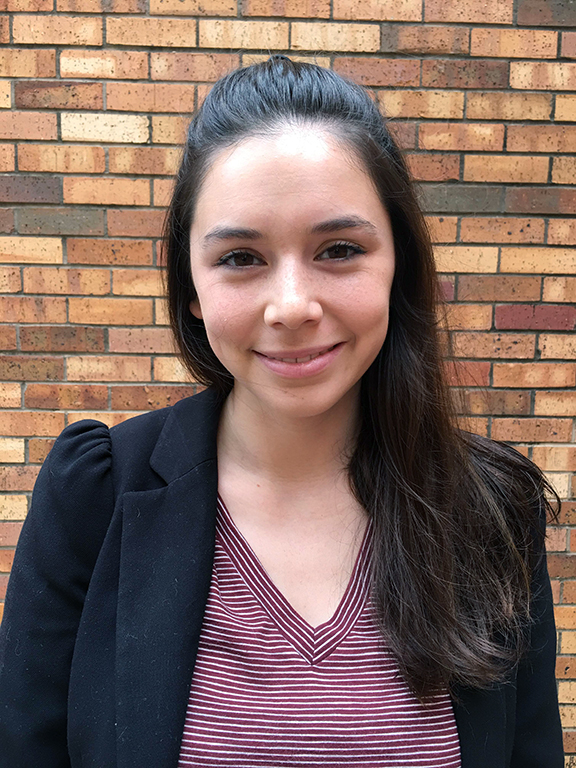In a yard just off Taft Boulevard, a sign with the slogan “Pray for Rain” seems to sit and wait, almost patiently, for just a drop to show that its being there is actually working. While prayers and wishes for rain continue each day, the fact remains that if rain doesn’t come soon Wichita Falls will enter a stage four drought situation and be faced with the possibility of running out of water. While the impending drought looms over the town, a new solution has come forth to fight it, rather than try and stop it. The Water Reuse Project is a new plan to treat wastewater from peoples’ homes and turn it into a safe and efficient source of drinking water.
“Wichita Falls droughts are on 10-12 year intervals,” Nix said. “After each drought we take everything we’ve learned and begin planning for the next one. We’re always improving.”
Nix said the current drought plan has been in effect for 25 years and is updated every five years. The most recent updates involved increasing the drought trigger percentages for each drought stage by 10 percent. This change left room for city officials to add a stage four.
“We were planning for stage four before we ever entered stage one,” Nix said. “We’ve been doing some real innovative stuff here. Fifteen years ago even talking about using wastewater for drinking water was a big taboo. But with all the new technology now, it’s completely possible.”
To slow or prevent the decline into stage four, the public works department and the water resources commission initiated a water reuse project. The project is designed to transfer treated wastewater from the River Road Wastewater Treatment Plant to the Cypress Water Treatment Plant.
“We had to decide between what was expensive, and what would be most beneficial to the city in the long run,” Nix said. “Every other option we looked at conserved less water for more cost.”
The Water Reuse Project officially started on Aug. 2 as contractors began installing a 63, 000-foot long pipeline from the Cyprus Water Treatment Plant to the River Road Wastewater Treatment Plant. The project is a direct reprisal of the city’s imminent drought situation as a last resort water supply for the city. Once completed, the 63,000-foot (12.3-miles) pipeline will carry 7.5 million gallons of water that will be treated, tested and redistributed into the city’s drinkable water supply.
The first step in this new water treatment process begins at the River Road Plant. The River Road Plant distributes treated wastewater to houses, businesses, and farms solely for irrigation purposes. The new Water Reuse Project uses a 12.3-mile pipeline from the River Road Plant to the Cypress Water Plant to turn that wastewater into clean drinking water.
“We took samples and did analysis at River Road before we ever submitted the idea,” Nix said. “The quality of the treated wastewater is actually higher than that of Lake Kemp.”
Nix said of the 97 harmful components found in water, only three were above the limit: micro bacteria (from sewage), nitrate (from urine), and triiodomethanes (from disinfectants).
“The River Road Treatment Plant does a great job of taking the trial methanes out of the water,” Nix said. “But you have to remember their plant is used for irrigation purposes, not drinking. There’s still the nitrate and microbials that need to be taken out.”
Unlike the Cypress Water facility, the River Road plant uses mainly a biological method to purify the water of the trial methanes, incorporating the use of bacteria that feed off the waste. The water is taken into the plant and stored into a large container where the water is then spun so that the waste materials fall to the bottom and are eaten by the bacteria and the clean water is taken out.
After being transferred to Cypress, the treated wastewater will be sent through the reverse osmosis system and introduced into the stream of water from Lake Kickapoo and Lake Arrowhead. All three sources will then be treated conventionally and used as the city’s water supply.
Unlike the treatment in the River Road Plant, Cypress takes both a physical and chemical approach for the next phase of sanitation. The water that comes in first goes through the microfiltration, a tube composed of more than 15 million strands of spaghetti-looking microfibers enclosed in a 5-inch diameter tube about 5 feet tall that has a pore size of approximately 0.1 micron or close to 0.000004 inches in diameter. At the plant, the microfiltration systems are grouped and staged in sections along a walkway approximately 100 feet long where water is taken through, and pushed back out after being treated.
“The microfiltration stage is extremely efficient at removing protozoa such as Cryptosporidium, a protozoan that causes gastrointestinal illness with diarrhea in humans,” Nix said. “It is also pretty good at removing strains of bacteria, though not as good as protozoans, but isn’t very good at removing viruses.”
After the microfiltration, the water continues to the reverse osmosis portion, a process that reverses the flow of water in a natural process of osmosis so that water passes from a more concentrated solution to a more dilute solution through a semi-permeable membrane. The system is composed of a couple giant structures that look like hundreds of rolled up carpets stacked on top of each other with tubes of water going in one end and out the other. The water goes in the back of the cylinders, or rolled up carpet-looking structures, out the front and into the cylinder to the left in a weaving motion until the water reaches the end where it is then cycled three times through the reverse osmosis. Each time the water is cycled, 50 percent of it is treated through osmosis and ready to be used. In total, slightly more than 80 percent of the original water will continue to the next phase.
“While the microfiltration is proficient in removing solely protozoa, reverse osmosis has a very high effectiveness in removing protozoa, bacteria, and viruses,” Nix said. “It also goes further as to remove common chemical contaminants such as sodium, chloride and copper.”
Once the water leaves the reverse osmosis process, it is stored in a lagoon and mixed with water from Lakes Kickapoo and Arrowhead where it is then coagulated and flocculated.
“The final step in the process is the Conventional Plant where coagulation, flocculation, sedimentation and filtration occur,” Nix said. “All waters, especially surface waters, contain both dissolved and suspended particles. The coagulation and flocculation processes are used to separate the suspended solids from the water.”
The coagulation destabilizes the suspended particles by putting coagulants with charges opposite to them. Once the charge is neutralized, the small suspended particles are capable of sticking together creating microflocs. Finally, a high-energy rapid mixer disperses the coagulants and promotes the particle collisions to finish the process.
Flocculation, the next step, is a gentle mixing stage that increases the particle size from submicroscopic microflocs to visible suspended particles. In flocculation the microflocs are brought into contact with each other through the process of slow mixing where collisions of the particles cause them to bond and produce larger visible flocs called pinflocs. The floc size continues to grow through additional collisions with inorganic polymers to form an even larger floc called a macrofloc.
According to Nix, the sedimentation and filtration steps are much simpler.
“We use sedimentation basins to settle out the floc before going to the filters,” Nix said, “followed by the last filtration step to get rid of as many of the flocs as we can.”
After the final stage of the treatment process, the water is distributed to the city and recycled through the treatment process again. The treatment plant hopes to pump out its usual revenue of 10 to 15 million gallons of water per day. Of the 10 million gallons, five will come from the lakes and five from treated wastewater — cutting the city’s lake usage in half.
“This is brand new innovation,” Nix said. “Even now, there are no regulations for this type of treatment.”
He said the public works department is working with the TCEQ to develop a set of rules to help protect the public health while this project is in use.
Although the project is on schedule, Nix still faces scrutiny for Wichita Falls being found on the TCEQ’s list of water system entities that would run out of water within six months back in March.
However, Nix explained there wasn’t any other category to select when notifying the agency that the city had entered stage three, but that the city has since been removed from that category. Nix said the water resources commission has several projections to help predict ensuing conditions.
“We use several rainfall averages to determine our projections,” Nix said. “The worst being from 2011, the best from 2012 and the last being an average or normal rainfall. The normal projection has us never leaving stage three.”
Nix said using these projections and the information gathered from the current drought, the WRC has thought of new procedures to help prevent future water restrictions.
One of the possible procedures involves cutting off and storing the unused water from Lake Kemp (previously sent through the reverse osmosis system). Another possible procedure would mean that the excess water from the plant will no longer be dumped into the Wichita Falls River, but rather back into the lakes — an idea that would recycle the pipe from the reuse project, saving the city $6- to $7-million.
“Even with all this in place,” Nix said, “the best cure for a drought is rain. It cuts usage and the drops flat line. Pray for rain.”



















